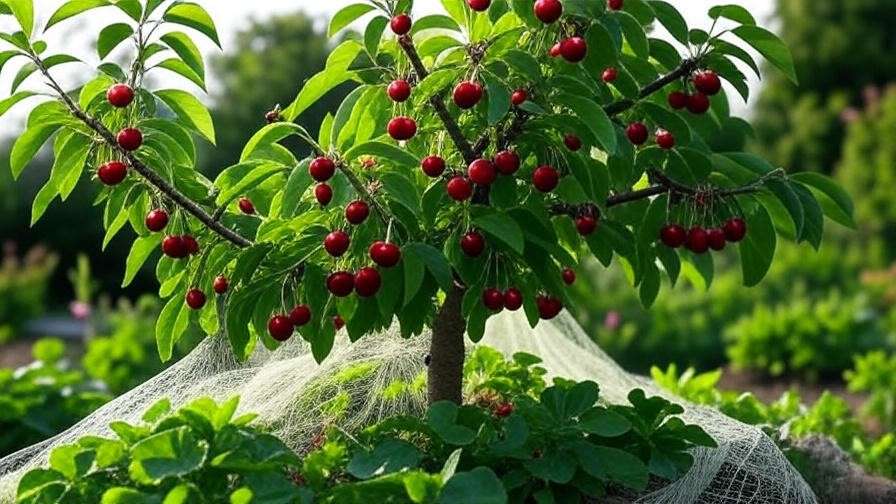Imagine stepping into your garden, expecting a vibrant harvest of juicy cherries, only to find your tree’s fruit scattered on the ground or riddled with pests. It’s a heartbreaking sight for any gardener. Learning how to minimize cherry tree fruit loss and maximize yield can transform this frustration into a bountiful reward. Cherries are a prized crop, whether you’re a home gardener or managing a small orchard, but they’re vulnerable to pests, diseases, and environmental challenges. In this comprehensive guide, you’ll discover expert-backed, practical strategies to protect your cherry trees and boost their productivity. From optimizing pollination to mastering pruning techniques, we’ll cover everything you need to ensure a thriving harvest. 🌳
With decades of combined experience from horticulturists, orchard owners, and agricultural research, this article draws on proven methods to help you grow healthier trees and enjoy more cherries. Whether you’re a beginner or a seasoned grower, these actionable tips will empower you to overcome common challenges and achieve a fruitful season. Let’s dive in and unlock the secrets to a flourishing cherry tree! 🍒
Understanding Cherry Tree Fruit Loss: Common Causes 🌧️🐦
Why Cherry Trees Lose Fruit
Cherry trees naturally shed some fruit in a process called “June drop,” where the tree self-regulates by dropping underdeveloped fruit to conserve resources. While this is normal, excessive fruit loss signals underlying issues. Understanding these causes is the first step to protecting your crop. Factors like pests, diseases, poor pollination, and environmental stress can significantly reduce your yield. By addressing these, you can ensure more cherries stay on the tree until harvest. 🌿
Key Culprits Behind Fruit Loss
Pests
Pests are a leading cause of cherry tree fruit loss. The cherry fruit fly, for instance, lays eggs in developing fruit, leading to maggot-infested cherries. Birds, such as robins and starlings, can strip trees bare in days. Aphids also weaken trees by sucking sap, reducing fruit quality. 🐛
Diseases
Diseases like brown rot (caused by Monilinia fructicola) can devastate crops, turning fruit into shriveled, moldy masses. Bacterial canker and powdery mildew further threaten fruit development by attacking branches and leaves, limiting the tree’s ability to support fruit. 🦠
Environmental Factors
Frost during bloom season can kill flowers, preventing fruit set. Drought stress or inconsistent watering leads to fruit drop, while poor pollination—often due to insufficient pollinators or incompatible varieties—reduces yield. Strong winds can also dislodge fruit prematurely. 🌬️
Human Error
Improper care, such as over-pruning, neglecting soil health, or incorrect watering, can stress trees and cause fruit loss. Nutrient deficiencies, particularly in nitrogen or potassium, weaken trees, making them less productive. 🌱
Maximizing Cherry Tree Yield: The Big Picture 🌟
What Does “Maximizing Yield” Mean?
Maximizing yield isn’t just about harvesting more cherries—it’s about achieving consistent, high-quality fruit year after year. This requires minimizing losses from pests, diseases, and environmental factors while optimizing tree health and fruit production. A healthy tree with robust fruit set, minimal losses, and proper care will produce larger, tastier cherries. 🍒
The Role of Tree Health
A vigorous cherry tree is the foundation of a bountiful harvest. Healthy trees resist pests and diseases better, produce more flowers, and support fruit development. Key practices like proper pruning, soil management, and pest control create an environment where your tree can thrive. By addressing the root causes of fruit loss, you pave the way for maximum yield.
Proven Strategies to Minimize Fruit Loss 🛡️
1. Optimize Pollination for Better Fruit Set 🐝
Pollination is critical for cherry production. Without it, flowers won’t develop into fruit, leading to significant losses. Here’s how to ensure successful pollination:
Choose Compatible Varieties
Some cherry trees, like sweet cherries, require cross-pollination from a compatible variety to produce fruit. Research varieties like ‘Bing’ or ‘Stella’ (self-pollinating) to match your tree’s needs. Check bloom times to ensure pollinators overlap. For example, ‘Black Tartarian’ is an excellent pollinator for many sweet cherry varieties. 🌸
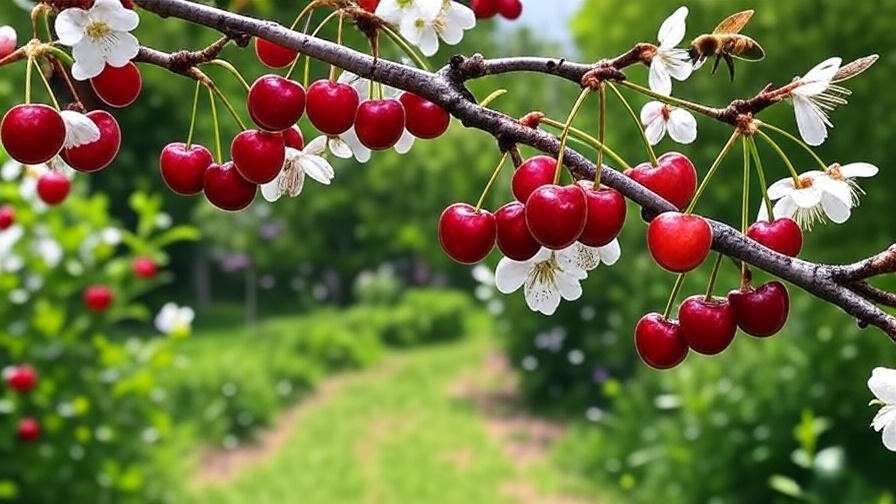
Attract Pollinators
Bees and other pollinators are essential for fruit set. Plant pollinator-friendly flowers like lavender or clover near your cherry trees to attract bees. Avoid using pesticides during bloom season, as they can harm pollinators. Installing a small bee house can also boost local bee populations. 🐝
Hand Pollination
For small-scale growers or in areas with low pollinator activity, hand pollination can improve fruit set. Use a small paintbrush to transfer pollen from one flower to another, focusing on flowers in the morning when pollen is most viable. This is especially useful for greenhouse-grown or isolated trees.
2. Protect Against Pests 🐦
Pests can decimate your cherry crop if left unchecked. Here are effective, humane strategies to keep them at bay:
Physical Barriers
Netting is one of the most effective ways to protect cherries from birds. Use fine-mesh netting draped over the tree after fruit begins to ripen, ensuring it’s secure to prevent birds from sneaking in. Reflective tape or shiny objects like old CDs can also deter birds by creating visual disturbances. 🦜
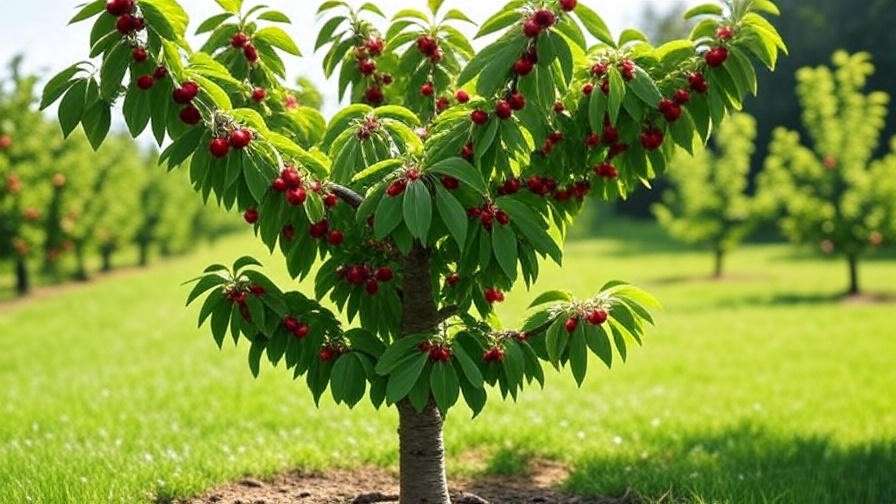
Organic Pest Control
Introduce beneficial insects like ladybugs to control aphids naturally. For cherry fruit flies, use organic sprays like neem oil or spinosad, applied early in the season before fruit ripens. Always follow label instructions to avoid harming beneficial insects or contaminating fruit.
Monitoring and Traps
Set up pheromone traps to monitor and reduce cherry fruit fly populations. Place traps in early spring and check them weekly. Regular monitoring helps you act quickly before infestations spiral. For small orchards, sticky traps can also capture other pests like aphids.
3. Prevent and Manage Diseases 🩺
Diseases can ruin both fruit and tree health. Proactive management is key:
Sanitation Practices
Remove fallen fruit, leaves, and debris around the tree base, as they can harbor fungal spores or bacteria. Prune infected branches and dispose of them away from the orchard to prevent disease spread. Clean tools between cuts to avoid cross-contamination. 🧹
Fungicides and Timing
For diseases like brown rot, apply fungicides labeled for cherry trees (e.g., sulfur-based products) during bloom and pre-harvest stages. Timing is critical—follow local extension service guidelines for your region’s disease pressure. Always use fungicides safely and sparingly.
Resistant Varieties
Plant disease-resistant cherry varieties to reduce losses. For example, ‘Regina’ and ‘Lapins’ show resistance to brown rot and bacterial canker. Consult your local nursery or extension service for recommendations suited to your climate.
4. Mitigate Environmental Stress 🌞
Environmental factors can be unpredictable, but you can take steps to protect your trees:
Frost Protection
Late spring frosts can destroy cherry blossoms. Use frost cloths or blankets to cover trees during cold snaps. For larger orchards, sprinklers can create a protective ice layer that insulates flowers. Monitor weather forecasts closely during bloom season. ❄️
Water Management
Cherries need consistent moisture, especially during fruit development. Water deeply once or twice a week, ensuring soil stays moist but not waterlogged. Drip irrigation is ideal for delivering water directly to the root zone. During drought, increase watering frequency but avoid overwatering.
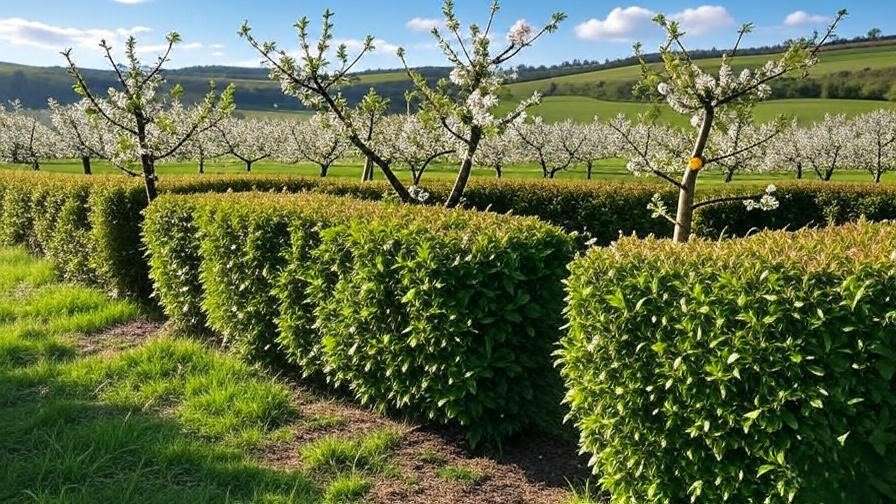
Windbreaks
Strong winds can knock fruit off trees or damage branches. Plant hedges or install temporary barriers like burlap screens to shield trees. For small gardens, consider dwarf varieties that are less exposed to wind.
Boosting Yield Through Expert Care Practices 🌱
5. Proper Pruning Techniques ✂️
Pruning is essential for maintaining tree health and maximizing cherry yield. Done correctly, it improves air circulation, sunlight exposure, and fruit production while reducing disease risk.
When to Prune
The best time to prune cherry trees is late winter or early spring, before buds swell but after the risk of severe frost has passed. This timing minimizes stress and allows the tree to heal quickly. Avoid pruning during wet weather to prevent disease spread. For young trees, light pruning in summer can shape growth without reducing fruiting potential. 🕰️
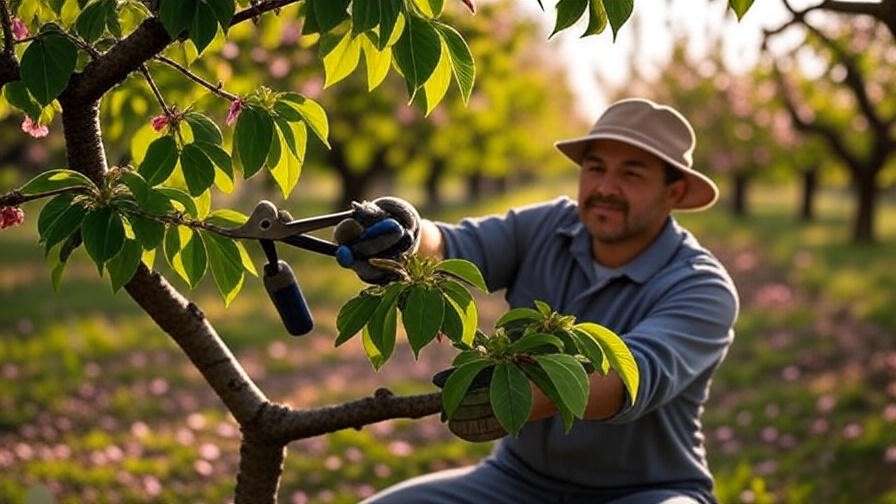
How to Prune
- Remove Dead or Diseased Wood: Cut away any dead, damaged, or diseased branches to prevent disease spread.
- Open the Canopy: Thin out crowded branches to improve airflow and light penetration, which boosts fruit quality and reduces fungal issues.
- Shape the Tree: For sweet cherries, aim for an open-center shape; for sour cherries, a central leader shape works best. Cut at a 45-degree angle just above a bud.
- Limit Cuts: Remove no more than 25% of the canopy in a single year to avoid stressing the tree.
Common Mistakes
Over-pruning can reduce fruiting wood and weaken the tree. Avoid cutting too close to the trunk, as this can invite disease. Never prune during bloom or fruiting, as it diverts energy from fruit production. Always use sharp, sanitized tools to ensure clean cuts. 🔧
6. Soil and Nutrient Management 🌿
Healthy soil is the backbone of a productive cherry tree. Proper nutrient management supports vigorous growth and abundant fruit.
Soil Testing
Test your soil every 2–3 years to check pH and nutrient levels. Cherry trees thrive in slightly acidic soil (pH 6.0–6.8). A soil test reveals deficiencies in key nutrients like nitrogen, phosphorus, or potassium, allowing you to tailor fertilization. Contact your local agricultural extension for affordable testing services. 📊
Fertilization
Apply a balanced fertilizer (e.g., 10-10-10) in early spring before bud break. For mature trees, use 1–2 pounds of fertilizer per year of tree age, up to 10 pounds maximum. Spread it evenly around the drip line, avoiding direct contact with the trunk. Organic options like compost or aged manure can supplement chemical fertilizers for sustainable care. 🌾
Mulching
Apply a 2–4 inch layer of organic mulch (e.g., wood chips or straw) around the tree base, keeping it 6 inches from the trunk to prevent rot. Mulch retains moisture, suppresses weeds, and improves soil structure as it decomposes. Replenish mulch annually for consistent benefits. 🌱
7. Thinning Fruit for Quality and Quantity 🍒
Thinning fruit may seem counterintuitive, but it’s a powerful way to improve yield and quality. By reducing the number of cherries per branch, you ensure larger, healthier fruit and prevent branch breakage.
Why Thin?
Overloaded branches can snap under the weight of too many cherries, and crowded fruit competes for nutrients, resulting in smaller, less flavorful cherries. Thinning also reduces the risk of biennial bearing, where trees produce heavily one year and sparsely the next. 🎯
How to Thin
- Timing: Thin fruit 4–6 weeks after bloom, when cherries are about the size of a pea. This allows the tree to focus energy on remaining fruit.
- Method: Gently twist off excess cherries, leaving one fruit every 2–3 inches along the branch. For sweet cherries, aim for 4–6 cherries per spur; for sour cherries, 2–3 per spur.
- Tools: Use your fingers or small pruning shears for precision. Avoid pulling, as it can damage spurs.
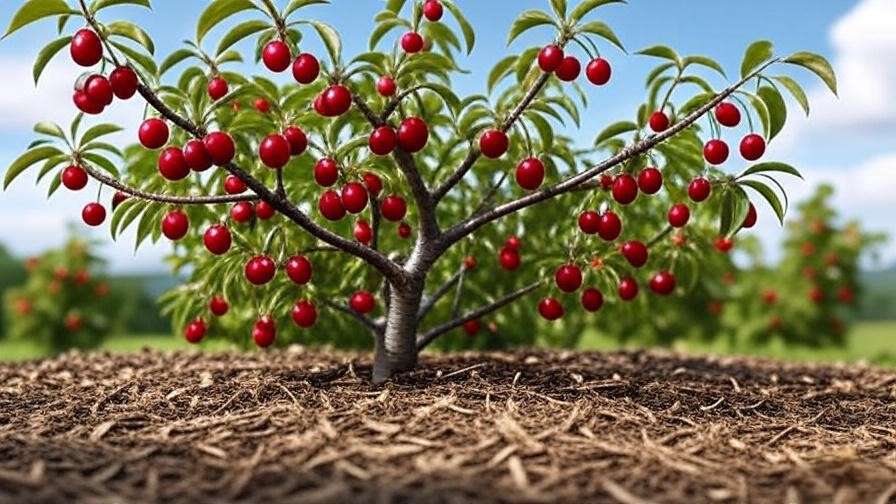
8. Timing Harvest Correctly ⏰
Harvesting at the right moment ensures peak flavor and minimizes post-harvest losses. Timing varies by variety and climate, so watch for these cues:
Ripeness Indicators
- Color: Sweet cherries should be deep red, black, or yellow (depending on the variety), while sour cherries are bright red or slightly translucent.
- Texture: Fruit should feel firm but yield slightly to gentle pressure.
- Taste Test: Sample a few cherries to confirm sweetness and flavor. Ripe cherries detach easily from the stem.
Harvest Techniques
Pick cherries with stems attached to extend shelf life. Use both hands—one to hold the branch, the other to gently twist the fruit off. Place cherries in a shallow basket to avoid bruising. Harvest in the morning when fruit is cool and firm. Store in a refrigerator at 32–35°F for up to a month. 🍴
Advanced Tips for Orchard Owners 🏡
Scaling Up: Commercial Considerations
For small orchard owners, scaling up cherry production requires efficiency and precision. Integrated Pest Management (IPM) combines monitoring, biological controls, and targeted sprays to minimize pest damage while reducing chemical use. Automated drip irrigation systems save time and ensure consistent watering across large areas. Investing in high-density planting with dwarf or semi-dwarf trees can increase yield per acre while simplifying maintenance. Consult with local agricultural extensions for region-specific IPM plans. 🚜
Climate Adaptation
Growing cherries in non-ideal climates (e.g., hot, humid, or very cold regions) requires strategic planning. In warm climates, choose heat-tolerant varieties like ‘Rainier’ or plant trees in partial shade to reduce heat stress. In humid areas, prioritize disease-resistant cultivars and improve airflow through aggressive pruning. For cold climates, select hardy varieties like ‘Montmorency’ and use windbreaks or microclimate management (e.g., planting near south-facing walls) to protect against frost. 🌍
Expert Insights: Lessons from Cherry Growers 👩🌾
Dr. Sarah Thompson, a horticulturist at Michigan State University’s Extension Service, shares: “Consistency is key in cherry production. Regular soil testing, timely pruning, and vigilant pest monitoring can make the difference between a mediocre and an exceptional harvest.” Case studies from Washington State, a leading cherry-producing region, show that growers who combine netting with organic pest controls reduce bird-related losses by up to 90%. Research from Cornell University highlights that proper thinning can increase fruit size by 20–30%, directly boosting market value. These insights underscore the importance of proactive, science-based care. 📖
Common Mistakes to Avoid 🚫
- Neglecting Pollination: Failing to plant compatible varieties or attract pollinators can lead to poor fruit set.
- Overwatering: Waterlogged roots weaken trees and promote root rot.
- Ignoring Soil Health: Skipping soil tests can result in nutrient imbalances that stunt growth.
- Improper Pruning: Cutting too much or at the wrong time reduces fruiting wood.
- Delayed Pest Control: Waiting until pests are visible often means it’s too late to prevent significant damage.
Correct these by following the strategies outlined above, such as testing soil annually, using drip irrigation, and setting up pest traps early in the season.
FAQs: Answering Reader Questions ❓
Why are my cherries falling off early?
Early fruit drop can result from natural June drop, pest infestations (e.g., cherry fruit flies), or environmental stress like drought or frost. Inspect fruit for pest damage and ensure consistent watering.
Can I grow cherries in a small backyard?
Yes! Dwarf varieties like ‘Stella’ or ‘Lapins’ are perfect for small spaces and can even be grown in large containers. Ensure good sunlight and pollination.
How do I protect cherries from birds without harming them?
Use fine-mesh netting, reflective tape, or motion-activated sprinklers. These methods deter birds humanely without traps or chemicals.
What’s the best cherry tree for beginners?
Self-pollinating varieties like ‘Stella’ or ‘Glacier’ are low-maintenance and ideal for novice growers.
How often should I water my cherry tree?
Water deeply once or twice weekly, adjusting for rainfall and soil drainage. Young trees need more frequent watering until established.
Conclusion: Your Path to a Bountiful Cherry Harvest 🎉
Growing a thriving cherry tree is within your reach. By implementing these proven strategies—optimizing pollination, protecting against pests and diseases, managing environmental stress, and mastering care practices like pruning and thinning—you can minimize fruit loss and maximize yield. Start with one or two tips, such as setting up bird netting or testing your soil, to see immediate improvements. Your reward will be a tree laden with juicy, vibrant cherries, ready to delight your family or customers. Share your cherry-growing journey in the comments, and explore our related articles on fruit tree care for more tips! 🌸

